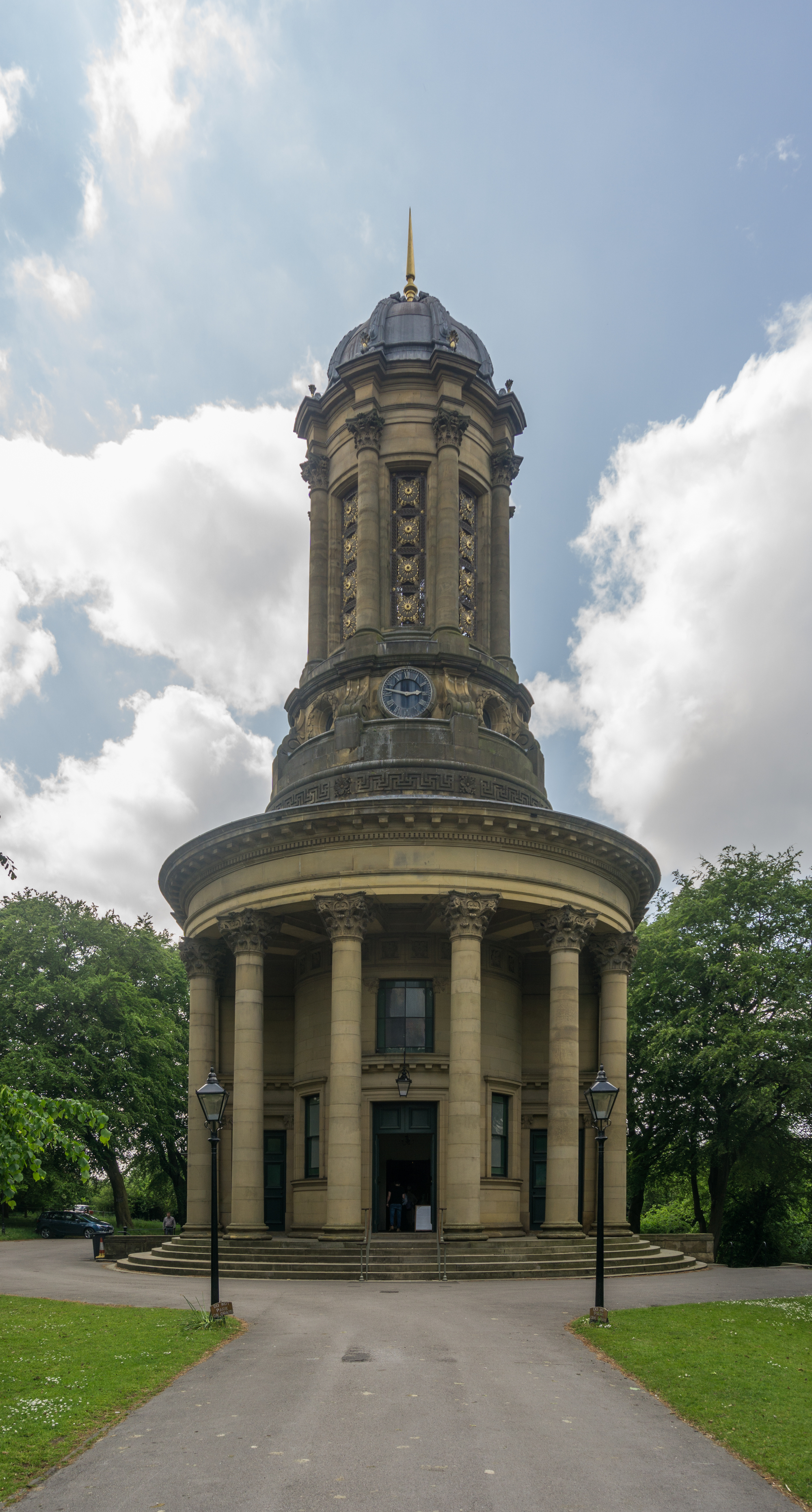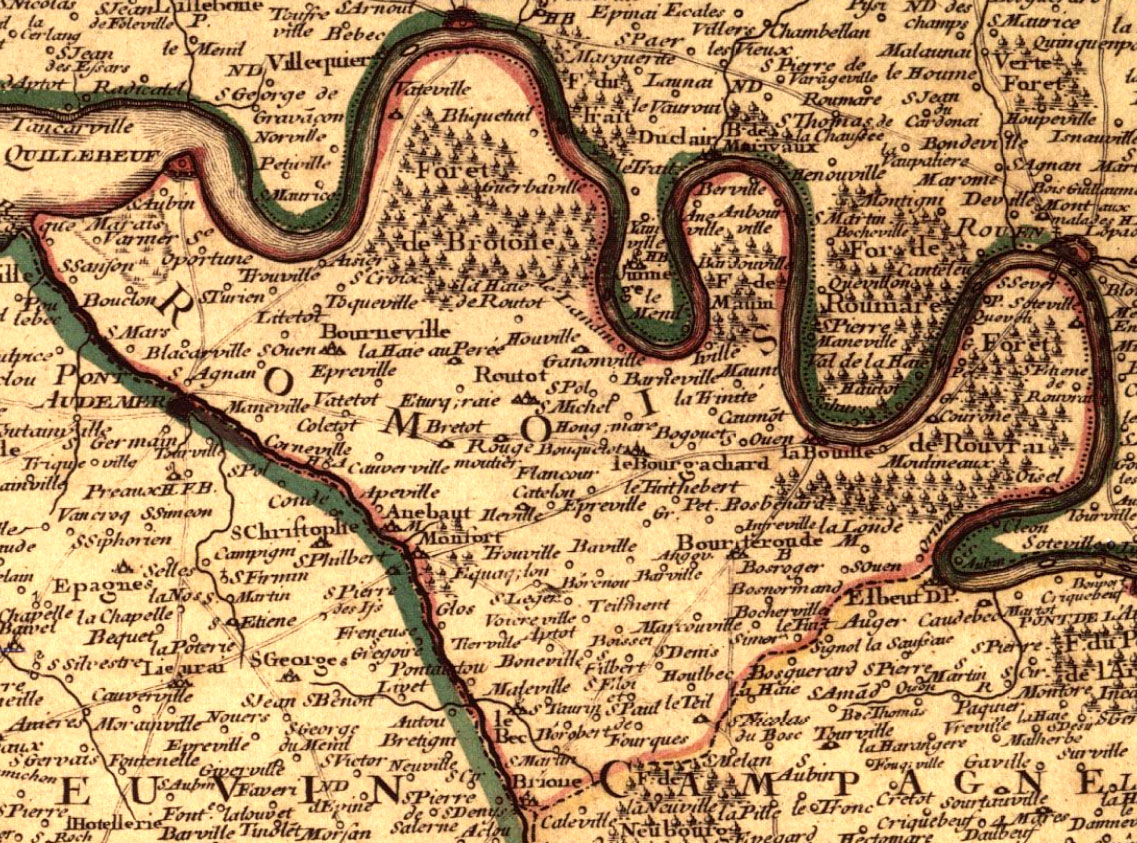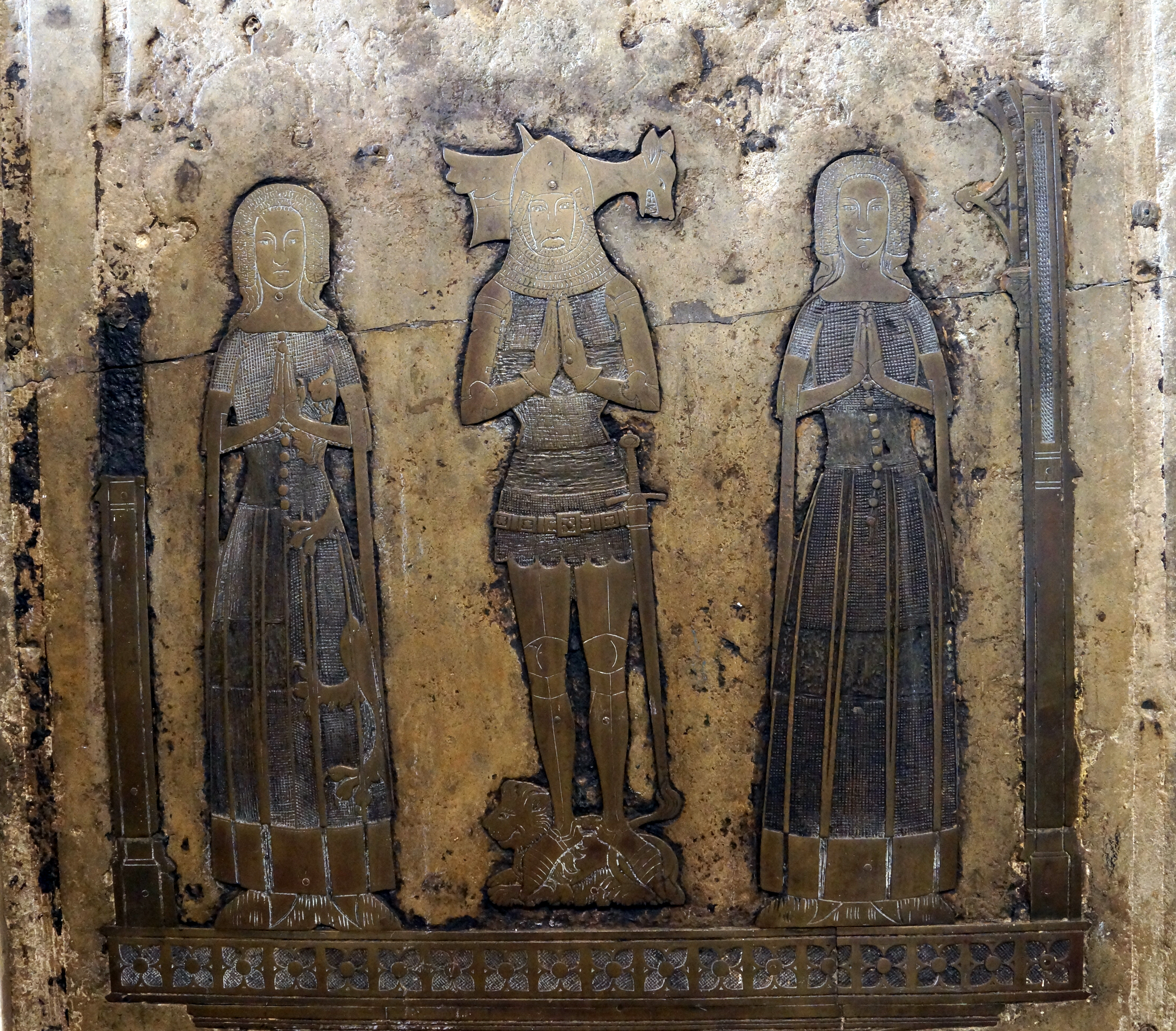|
St. Mary's Church, Bridport
St Mary's Church is an Anglican parish church in Bridport, Dorset, England. It is a Grade I listed building. Part of the Bridport Team Ministry, it is the civic church of the town and principal church of the Parish of Bridport. There is a strong connection with the Bridport United Church (Methodist/United Reformed Church) and the two hold joint services, study groups and children's holiday clubs. The parish is linked with Roumois in the Roman Catholic Diocese of Évreux, Normandy, France. The church has a maximum capacity of 400 and hosts many events. It has a peal of eight bells. History The earliest remains of the church, dating from the early 13th century, are to be found in the north and south transepts. Much of the rest of the building, including the central tower, dates from the late 14th century and the 15th century. The church was substantially restored and altered in the 19th century. There is a 17th-century monumental brass in St. Catherine's Chapel that commemorates E ... [...More Info...] [...Related Items...] OR: [Wikipedia] [Google] [Baidu] |
Bridport
Bridport is a market town in Dorset, England, inland from the English Channel near the confluence of the River Brit and its tributary the Asker. Its origins are Saxon and it has a long history as a rope-making centre. On the coast and within the town's boundary is West Bay, a small fishing harbour also known as Bridport Harbour. The town features as Port Bredy in Thomas Hardy's Wessex novels. In the 21st century, Bridport's arts scene has expanded with an arts centre, theatre, cinema and museum. In the 2011 census the population of Bridport's built-up area was 13,568. The town is twinned with Saint-Vaast-la-Hougue, France. History Bridport's origins are Saxon. During the reign of King Alfred it became one of the four most important settlements in Dorset – the other three being Dorchester, Shaftesbury and Wareham – with the construction of fortifications and establishment of a mint. Bridport's name probably derives from another location nearby. In the ... [...More Info...] [...Related Items...] OR: [Wikipedia] [Google] [Baidu] |
Anglican Parish Church
A parish church in the Church of England is the church which acts as the religious centre for the people within each Church of England parish (the smallest and most basic Church of England administrative unit; since the 19th century sometimes called the ecclesiastical parish, to avoid confusion with the civil parish which many towns and villages have). Parishes in England In England, there are parish churches for both the Church of England and the Roman Catholic Church. References to a "parish church", without mention of a denomination, will, however, usually be to those of the Church of England due to its status as the Established Church. This is generally true also for Wales, although the Church in Wales is dis-established. The Church of England is made up of parishes, each one forming part of a diocese. Almost every part of England is within both a parish and a diocese (there are very few non-parochial areas and some parishes not in dioceses). These ecclesiastical parishes ... [...More Info...] [...Related Items...] OR: [Wikipedia] [Google] [Baidu] |
Listed Building
In the United Kingdom, a listed building or listed structure is one that has been placed on one of the four statutory lists maintained by Historic England in England, Historic Environment Scotland in Scotland, in Wales, and the Northern Ireland Environment Agency in Northern Ireland. The term has also been used in the Republic of Ireland, where buildings are protected under the Planning and Development Act 2000. The statutory term in Ireland is " protected structure". A listed building may not be demolished, extended, or altered without special permission from the local planning authority, which typically consults the relevant central government agency, particularly for significant alterations to the more notable listed buildings. In England and Wales, a national amenity society must be notified of any work to a listed building which involves any element of demolition. Exemption from secular listed building control is provided for some buildings in current use for worship, ... [...More Info...] [...Related Items...] OR: [Wikipedia] [Google] [Baidu] |
Methodist
Methodism, also called the Methodist movement, is a group of historically related denominations of Protestant Christianity whose origins, doctrine and practice derive from the life and teachings of John Wesley. George Whitefield and John's brother Charles Wesley were also significant early leaders in the movement. They were named ''Methodists'' for "the methodical way in which they carried out their Christian faith". Methodism originated as a revival movement within the 18th-century Church of England and became a separate denomination after Wesley's death. The movement spread throughout the British Empire, the United States, and beyond because of vigorous missionary work, today claiming approximately 80 million adherents worldwide. Wesleyan theology, which is upheld by the Methodist churches, focuses on sanctification and the transforming effect of faith on the character of a Christian. Distinguishing doctrines include the new birth, assurance, imparted righteousness ... [...More Info...] [...Related Items...] OR: [Wikipedia] [Google] [Baidu] |
United Reformed Church
The United Reformed Church (URC) is a Protestant Christian church in the United Kingdom. As of 2022 it has approximately 40,000 members in 1,284 congregations with 334 stipendiary ministers. Origins and history The United Reformed Church resulted from the 1972 union of the Presbyterian Church of England and the Congregational Church in England and Wales. In introducing the United Reformed Church Bill in the House of Commons on 21 June 1972, Alexander Lyon called it "one of the most historic measures in the history of the Christian churches in this country". About a quarter of English Congregational churches chose not to join the new denomination; in England, there are three main groups of continuing Congregationalists: the Congregational Federation, the Evangelical Fellowship of Congregational Churches and the Fellowship of Independent Evangelical Churches. The URC subsequently united with the Re-formed Association of Churches of Christ in 1981 and the Congregational Union of S ... [...More Info...] [...Related Items...] OR: [Wikipedia] [Google] [Baidu] |
Roumois
The Roumois () is a region in the northwestern part of the Eure ''département'' in Normandy, France. It is a plateau situated southwest of Rouen. Its northern boundary is the Seine downstream of Elbeuf, its western boundary is the Risle valley. The plain of Le Neubourg lies to the south. The main towns of the Roumois are Bourg-Achard and Bourgtheroulde-Infreville. The landscape is similar to that of the Pays de Caux on the north side of the Seine. The economy is mainly based on agriculture, but it is also influenced by the nearby Rouen agglomeration. History Encyclopédie Méthodique The ''Encyclopédie méthodique par ordre des matières'' ("Methodical Encyclopedia by Order of Subject Matter") was published between 1782 and 1832 by the French publisher Charles Joseph Panckoucke, his son-in-law Henri Agasse, and the latter's ... References {{Coord, 49.36, 0.76, display=title Landforms of Eure Former provinces of France Plateaus of Metropolitan France Landforms ... [...More Info...] [...Related Items...] OR: [Wikipedia] [Google] [Baidu] |
Roman Catholic Diocese Of Évreux
The Roman Catholic Diocese of Évreux (Latin: ''Dioecesis Ebroicensis''; French language, French: ''Diocèse d'Evreux'') is a Roman Catholic diocese in France. The diocese comprises the Departments of France, department of Eure within the Regions of France, Region of Normandy. The diocese is a suffragan of the Archdiocese of Rouen, and the current bishop is Christian Nourrichard, who was appointed in 2006. History Tradition has it that the diocese of Évreux was founded by Saint Taurinus. That tradition claims that he was born during the reign of the Roman Emperor Domitian (81-96), and was baptized by Pope Clement I (ca, 91-101). He set out for Gaul in the company of Saint Denis of Paris, Saint Denis, who founded the Church of Paris. He went on an embassy to Rome, where he received the blessing of Pope Sixtus (ca. 116-125), after which he returned to Gaul. Shortly after the death of Sixtus, the barbarians overran the province. The last remark, on top of the unlikeliness of the ot ... [...More Info...] [...Related Items...] OR: [Wikipedia] [Google] [Baidu] |
Transept
A transept (with two semitransepts) is a transverse part of any building, which lies across the main body of the building. In cruciform churches, a transept is an area set crosswise to the nave in a cruciform ("cross-shaped") building within the Romanesque and Gothic Christian church architectural traditions. Each half of a transept is known as a semitransept. Description The transept of a church separates the nave from the sanctuary, apse, choir, chevet, presbytery, or chancel. The transepts cross the nave at the crossing, which belongs equally to the main nave axis and to the transept. Upon its four piers, the crossing may support a spire (e.g., Salisbury Cathedral), a central tower (e.g., Gloucester Cathedral) or a crossing dome (e.g., St Paul's Cathedral). Since the altar is usually located at the east end of a church, a transept extends to the north and south. The north and south end walls often hold decorated windows of stained glass, such as rose windows, in sto ... [...More Info...] [...Related Items...] OR: [Wikipedia] [Google] [Baidu] |
Monumental Brass
A monumental brass is a type of engraved sepulchral memorial, which in the 13th century began to partially take the place of three-dimensional monuments and effigies carved in stone or wood. Made of hard latten or sheet brass, let into the pavement, and thus forming no obstruction in the space required for the services of the church, they speedily came into general use, and continued to be a favourite style of sepulchral memorial for three centuries. In Europe Besides their great value as historical monuments, monumental brasses are interesting as authentic contemporary evidence of the varieties of armour and costume, or the peculiarities of palaeography and heraldic designs, and they are often the only authoritative records of the intricate details of family history. Although the intrinsic value of the metal has unfortunately contributed to the wholesale spoliation of these interesting monuments, they are still found in remarkable profusion in England, and they were at one time ... [...More Info...] [...Related Items...] OR: [Wikipedia] [Google] [Baidu] |
Monmouth Rebellion
The Monmouth Rebellion, also known as the Pitchfork Rebellion, the Revolt of the West or the West Country rebellion, was an attempt to depose James II, who in February 1685 succeeded his brother Charles II as king of England, Scotland and Ireland. A group of dissident Protestants led by James Scott, 1st Duke of Monmouth, eldest illegitimate son of Charles II, opposed James largely due to his Catholicism. The failure of Parliamentary efforts to exclude James from the succession in 1681 resulted in the 1683 Rye House Plot to assassinate Charles II and James; although Monmouth was then in exile in the Dutch Republic, he was identified as a co-conspirator. His rebellion was coordinated with a simultaneous rising in Scotland, led by Archibald Campbell, 9th Earl of Argyll. On 11 June 1685, Monmouth landed at Lyme Regis in South West England where he had widespread popular support, planning to take control of the area and march on London. In the next few weeks, his growing army ... [...More Info...] [...Related Items...] OR: [Wikipedia] [Google] [Baidu] |
Church Of England Church Buildings In Dorset
Church may refer to: Religion * Church (building), a building for Christian religious activities * Church (congregation), a local congregation of a Christian denomination * Church service, a formalized period of Christian communal worship * Christian denomination, a Christian organization with distinct doctrine and practice * Christian Church, either the collective body of all Christian believers, or early Christianity Places United Kingdom * Church (Liverpool ward), a Liverpool City Council ward * Church (Reading ward), a Reading Borough Council ward * Church (Sefton ward), a Metropolitan Borough of Sefton ward * Church, Lancashire, England United States * Church, Iowa, an unincorporated community * Church Lake, a lake in Minnesota Arts, entertainment, and media * '' Church magazine'', a pastoral theology magazine published by the National Pastoral Life Center Fictional entities * Church (''Red vs. Blue''), a fictional character in the video web series ''Red vs. Blue'' * Chur ... [...More Info...] [...Related Items...] OR: [Wikipedia] [Google] [Baidu] |
Grade I Listed Churches In Dorset
Grade most commonly refers to: * Grade (education), a measurement of a student's performance * Grade, the number of the year a student has reached in a given educational stage * Grade (slope), the steepness of a slope Grade or grading may also refer to: Music * Grade (music), a formally assessed level of profiency in a musical instrument * Grade (band), punk rock band * Grades (producer), British electronic dance music producer and DJ Science and technology Biology and medicine * Grading (tumors), a measure of the aggressiveness of a tumor in medicine * The Grading of Recommendations Assessment, Development and Evaluation (GRADE) approach * Evolutionary grade, a paraphyletic group of organisms Geology * Graded bedding, a description of the variation in grain size through a bed in a sedimentary rock * Metamorphic grade, an indicatation of the degree of metamorphism of rocks * Ore grade, a measure that describes the concentration of a valuable natural material in the surrou ... [...More Info...] [...Related Items...] OR: [Wikipedia] [Google] [Baidu] |


.jpg)


